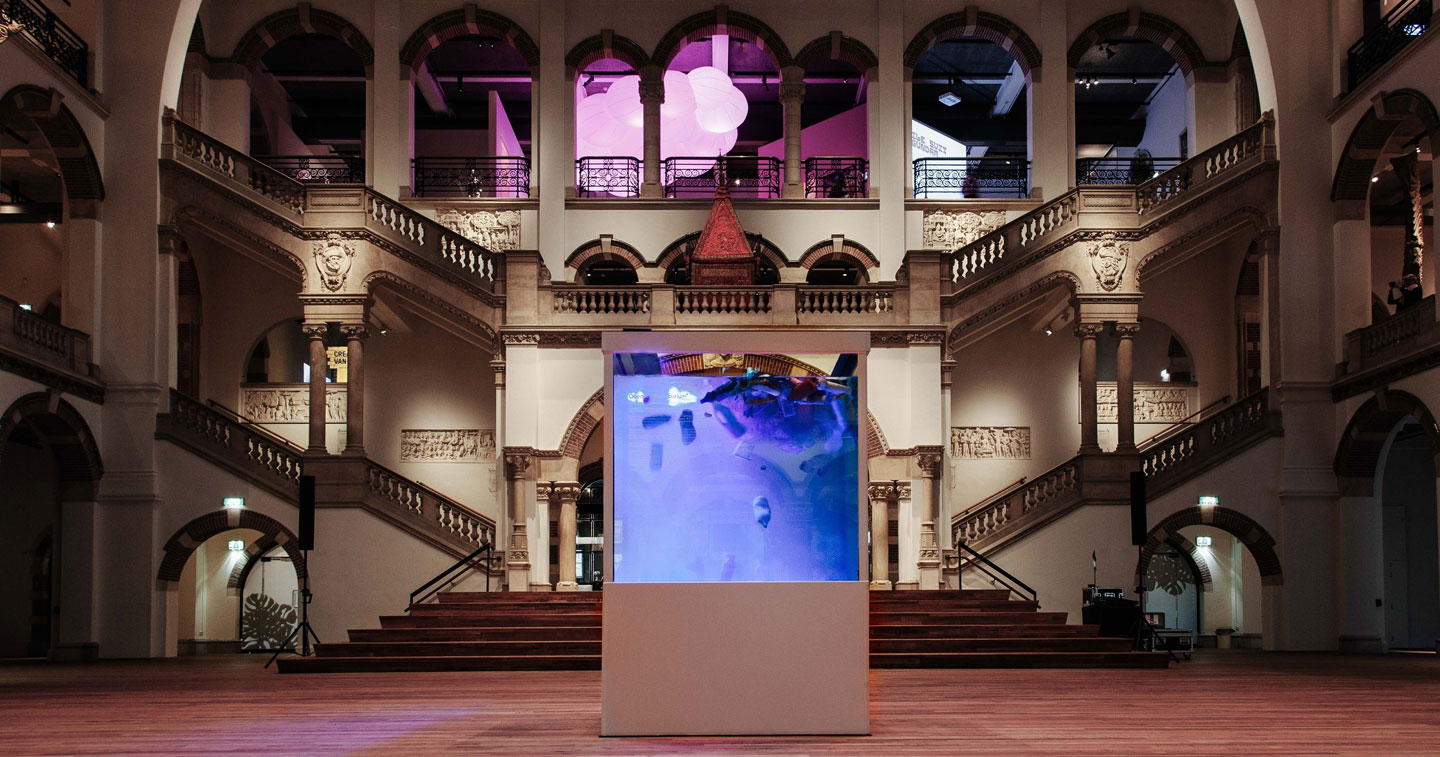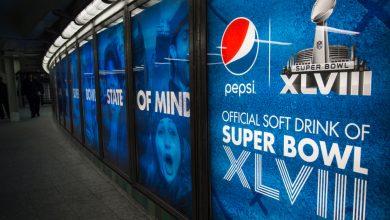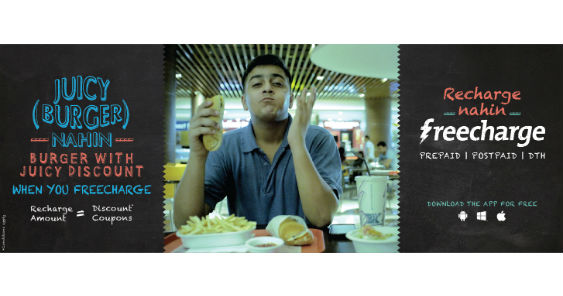Amsterdam, 10 April 2019 – Plastic soup is contaminating our oceans. So much so that the European Union has just announced plans to introduce new laws on single-use plastic to reduce marine litter (27 March 2019). But, how many people have actually seen plastic soup? Not a lot. To date, our oceans have already been contaminated with 150 billion kilograms (165 million US tons) of plastic waste, and billions of kilos more are added every year*. However as long as the problem is out of sight, it’s out of mind. This is exactly why Dopper, producer of reusable water bottles with a mission, wants to create awareness and change behavior by bringing people eye to eye with plastic soup.
World exclusive: the first Oceanic Plasticarium
The world’s very first Oceanic Plasticarium is literally bringing plastic soup to the people. The glass cube is a brand new museum piece, which contains 2,700 liters (713 gallons) of plastic soup, sampled directly from the Pacific Ocean, brought to the Institutes founded to educate people about the history of mankind and nature. Filling in a crucial – but missing – part of history.
“People often see plastic waste as such an overpowering problem, that feels like it’s too big to do anything about. Our goal with this project is to change that. We are encouraging everyone to take ownership. Plastic soup is something we have created together, and we’re all part of both the problem and the solution. By altering our behavior, together we can make single-use plastics a thing of the past. Our aim is to banish plastic soup to the history books. So that in the future, the only place you will ever be able to see it will be in museums like the Tropenmuseum,” says Merijn Everaarts, founder of Dopper and initiator of the Oceanic Plasticarium.
This unique museum piece is both disturbing and thought provoking: allowing the public to get up close and personal to the heavily polluted water, with the aim to create awareness and a dialogue. The Oceanic Plasticarium aims to empower people, so that they can take ownership of their part in changing the tide against plastic pollution. The idea is to spark a conversation about plastic waste, which will ultimately lead to actual lifestyle changes.
From SECTION 135°W 35°N in the Pacific Ocean to the Tropenmuseum
The Tropenmuseum wasn’t randomly selected as the location for this unprecedented project. As a ‘museum of world cultures’, it is renowned for its unique collection and exhibitions that represent the riches of cultures far and wide. The plastic soup has been allocated a prominent, eye-catching location in the museum – right in the main hall and central point of the museum – and deservedly so. After all, this is one of the most defining events in our recent history: distressing, controversial, and man-made. But contrary to the rest of the museum collection, this plastic soup isn’t a treasure to be admired. Instead, the goal is to make it history, by making it a part of history. Putting it where it belongs: in a museum.
Claim your part of the oceans
The Oceanic Plasticarium is created by Dopper, a social enterprise and B-Corporation known for their reusable water bottles. At the same time they revealed the Oceanic Plasticarium, they launched a new water bottle: Dopper Black & White. With this bottle you claim your part for the clean ocean, by choosing reuse over single-use. Dopper’s mission has always been to work for clean water, in every ocean, from every tap. For this very reason the organization actively invests in reducing single-use plastics. 5% of Dopper’s net sales revenues are invested into supporting water projects worldwide, in countries like Nepal (together with Simavi). The more Dopper water bottles sold, the greater the impact. Additionally Dopper encourages the use of tap water as an affordable and environmentally friendly alternative to bottled water. On average, every Dopper consumer protects our oceans from 40 single-use water bottles a year. This amounts to a total reduction of 40.763.203 kilograms (89867479 lbs.) of single-use plastic so far, that otherwise could have ended up in the environment (source: independent research by Avance, Dopper annual report). Nowadays, tap water in most western countries is kept to extremely high standards, making it perfectly suitable for drinking. All the more reason to make the switch from bottled water to tap water today.
The plastic in the Oceanic Plasticarium was sourced from the Pacific Ocean by Greenpeace in 2018. The container measures 140 x 140 x 140 cm (55 x 55 x 55 inches) and holds 2,700 liters (713 gallons) of water. The coordinates 135°W 35°N refer to an area in the north central Pacific Ocean.
The Oceanic Plasticarium will be on display in Amsterdam for April, after which the installation will start an international tour.
Let’s do our part for the Oceans. Tap water. Save our oceans.
Credits:
Concept – Creative direction: Scott Kooken and Michael James Philips
PR consultant: Jessica Hartley
Film – Edit: Martijn Ras
Event photography: Fabian Calis
This Dopper project was realized and executed together with Dopper’s in house (creative) team in collaboration with Het Tropenmuseum.










